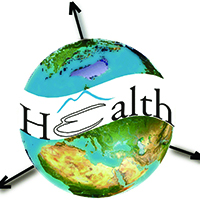Correction. Detecting space-time disease clusters with arbitrary shapes and sizes using a co-clustering approach.

Published: 1 August 2023
Abstract Views: 615
Publisher's note
All claims expressed in this article are solely those of the authors and do not necessarily represent those of their affiliated organizations, or those of the publisher, the editors and the reviewers. Any product that may be evaluated in this article or claim that may be made by its manufacturer is not guaranteed or endorsed by the publisher.
All claims expressed in this article are solely those of the authors and do not necessarily represent those of their affiliated organizations, or those of the publisher, the editors and the reviewers. Any product that may be evaluated in this article or claim that may be made by its manufacturer is not guaranteed or endorsed by the publisher.
Similar Articles
- Sabelo Nick Dlamini, Jonas Franke, Penelope Vounatsou, Assessing the relationship between environmental factors and malaria vector breeding sites in Swaziland using multi-scale remotely sensed data , Geospatial Health: Vol. 10 No. 1 (2015)
- Michał Paweł Michalak, Jack Cordes, Agnieszka Kulawik, Sławomir Sitek, Sławomir Pytel, Elżbieta Zuzańska-Żyśko, Radosław Wieczorek, Reducing bias in risk indices for COVID-19 , Geospatial Health: Vol. 17 No. s1 (2022): Special issue on COVID-19
- Sami Ullah, Nurul Hidayah Mohd Nor, Hanita Daud, Nooraini Zainuddin, Muhammad Salim Javed Gandapur, Iftikhar Ali, Alamgir Khalil, Spatial cluster analysis of COVID-19 in Malaysia (Mar-Sep, 2020) , Geospatial Health: Vol. 16 No. 1 (2021)
- Ernest O. Asare, Adrian M. Tompkins, Leonard K. Amekudzi, Volker Ermert, Robert Redl, Mosquito breeding site water temperature observations and simulations towards improved vector-borne disease models for Africa , Geospatial Health: Vol. 11 No. s1 (2016): HEALTHY FUTURES
- Sharifah Saffinas Syed Soffian, Azmawati Mohammed Nawi, Rozita Hod, Khairul Nizam Abdul Maulud, Ahmad Tarmizi Mohd Azmi, Mohd Hazrin Hasim Hashim, Huan-Keat Chan, Muhammad Radzi Abu Hassan, Spatial clustering of colorectal cancer in Malaysia , Geospatial Health: Vol. 18 No. 1 (2023)
- Jose Antonio Quesada, Inmaculada Melchor, Andreu Nolasco, Point process methods in epidemiology: application to the analysis of human immunodeficiency virus/acquired immunodeficiency syndrome mortality in urban areas , Geospatial Health: Vol. 12 No. 1 (2017)
- Gianluca Boo, Stefan Leyk, Sara Irina Fabrikant, Andreas Pospischil, Ramona Graf, Assessing effects of structural zeros on models of canine cancer incidence: a case study of the Swiss Canine Cancer Registry , Geospatial Health: Vol. 12 No. 1 (2017)
- Carla V.V. Rollemberg, Marília M.B.L. Silva, Karla C. Rollemberg, Fábio R. Amorim, Nayanna M.N. Lessa, Marcos D.S. Santos, Acácia M.B. Souza, Enaldo V. Melo, Roque P. Almeida, Ângela M. Silva, Guilherme L. Werneck, Mario A. Santos, José A.P. Almeida, Amélia R. Jesus, Predicting frequency distribution and influence of sociodemographic and behavioral risk factors of Schistosoma mansoni infection and analysis of co-infection with intestinal parasites , Geospatial Health: Vol. 10 No. 1 (2015)
- Guillermo Albrieu-Llinás, Manuel O. Espinosa, Agustín Quaglia, Marcelo Abril, Carlos Marcelo Scavuzzo, Urban environmental clustering to assess the spatial dynamics of Aedes aegypti breeding sites , Geospatial Health: Vol. 13 No. 1 (2018)
- Fleur Hierink, Nima Yaghmaei, Mirjam I. Bakker, Nicolas Ray, Marc van den Homberg, Geospatial tools and data for health service delivery: opportunities and challenges across the disaster management cycle , Geospatial Health: Vol. 19 No. 2 (2024)
You may also start an advanced similarity search for this article.

 https://doi.org/10.4081/gh.2023.1232
https://doi.org/10.4081/gh.2023.1232





